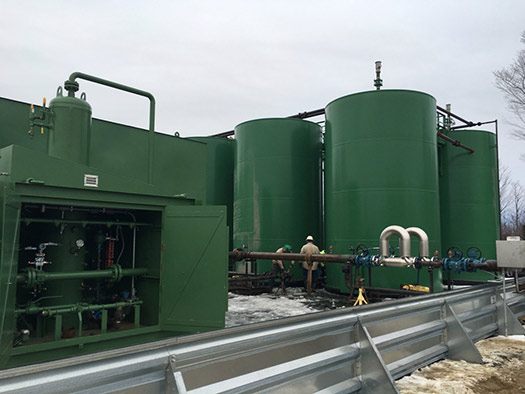February 2024, Vol. 251, No. 2
Tech Notes
Remote Alarm Notification Helps Fuel Increased Gas Production
By Cody P. Bann, Director of Engineering, SmartSights
Natural gas production levels in 2020 stood at about 33.5 Tcf, coming from the two mainstays of the United States: the Appalachian and West Texas regions. To meet demand and remain competitive, companies rely upon SCADA systems to help communicate important information, monitor equipment, improve efficiencies and ensure there is not any unplanned downtime.

Accurate, real-time data is essential to succeeding in the oil and gas industry. Engineers need operational data from the field to calibrate equipment, schedule maintenance activities and coordinate with third-party logistics, to keep the flow of product moving.
SCADA systems boost operations by managing equipment remotely and overseeing critical processes. They give operators more control over equipment and processes, including controllers, input/output devices, communication equipment and systems as a whole. The process typically involves several subsystems, which manage assets dispersed in remote locations — often with limited connectivity.
Management uses information analyzed by SCADA systems to calculate production values, generate trends for decision-making and project company profits. Health Safety and Environment and regulatory compliance personnel are constantly on the lookout for potential environmental issues and pipeline integrity.
Seneca Resources — the exploration and production segment of National Fuel Gas Company, which operates in northwest Pennsylvania — requires a large team of operators to support their assets and depends on a robust SCADA system. In 2009, the company moved to a standardized single solution, using AVEVA System Platform, integrated with WIN-911 remote alarm notification software.
“To keep our operations functioning smoothly requires constant data monitoring and analysis,” said Kevin Lestage, vice president, Information Technology, Seneca. “It was imperative to find a SCADA system that could meet our challenges, and track and process information in real-time at every step.”
To accommodate the various production processing methods on Seneca’s well pads, their automation and SCADA team designed a comprehensive template in their SCADA system, to standardize the collection of data from wells, tanks, meters and transducers.
The alarm subscription and labeling methodology in the alarm software appealed to Seneca because it aligned with the asset model in their SCADA system.
In previous versions of the software, tags had to be manually exported from the SCADA system and imported into the software. This caused interruptions to the alarm system each time new tags were added, and there were significant limitations to sending alarm notifications to specific groups of operators.
The system platform, therefore, had to be designed to support the alarm software, whereas the new WIN-911 Advanced is flexible and can support any configuration as is.
The alarm subscription feature allows Seneca to write specific alarm queries and tag them with labels, to group alarms by facilities, geographic regions and other criteria.
The alarm notification policy feature provides the capability to assign rules to initiate callout notifications and route the resulting alarms to contacts associated with specific labels. When a contact is set up in the system, applying the appropriate labels makes it easy to ensure the contact is receiving the proper set of alarms from the system.
“The remote alarm notification software lets us quickly organize alarm notifications based on alarm types, severity, worker roles, or just about any other criteria we choose,” added Lestage.
The notification software also supports numerous alarm notification methods. Seneca leverages SMS, mobile app and e-mail notifiers. With 120 contacts and an average of 250 alarm events each day, over 24,000 notifications are sent out daily by a single server.
Given the critical role that the notification software plays in Seneca’s operations, it is imperative that there is virtually no downtime associated with the system. The software’s redundancy features provide the functionality for Seneca to set up a hot standby backup system in their secondary data center.
When there is a disruption in the primary data center or maintenance on the primary software environment, the backup system can quickly be switched to active mode — without a disruption in alarm notifications being sent to operations staff or contractors.
Author: Cody P. Bann is director of engineering at SmartSights — a data-driven analytics, reports and notifications company.






Comments